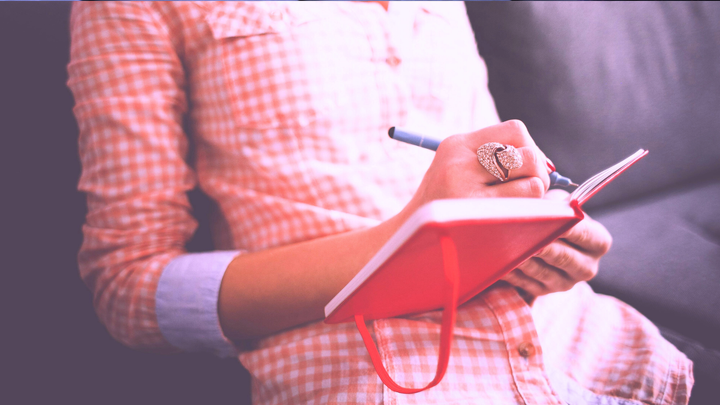How Guided Imagery Transforms Your Mind and Body

Imagine this: you're lying in a quiet meadow, the sun warming your skin, a soft breeze carrying the scent of wildflowers. For a moment, your worries dissolve. This isn't a daydream, it's the essence of guided imagery, a powerful practice that taps into your mind's potential to heal and transform. But what makes this technique so effective? And how can you harness it for better health and well-being? Let's explore the science, applications, and transformative effects of guided imagery.
The Science Behind Guided Imagery
Guided imagery isn't just wishful thinking with your eyes closed, it's a technique deeply rooted in science. Drawing from fields like psychophysiology, psychoneuroimmunology, and neuroplasticity, this practice uses mental visualization to influence both mind and body. When you vividly imagine a calming scene, your brain responds as if it's actually happening. Heart rate slows, cortisol levels drop, and your parasympathetic nervous system, your body's natural "chill out" button, kicks into gear.
At its core, guided imagery strengthens the mind-body connection. Think of it as mental yoga for your brain: it reshapes neural pathways, helping to replace stress responses with feelings of calm and empowerment. Research has even shown that it can enhance immune function, regulate emotions, and reduce physical pain. In short, your imagination might just be your most underutilized superpower.
What Does Guided Imagery Do for You?
Reduces Stress and Anxiety
Feeling frazzled? Guided imagery can help. Studies show it reduces cortisol, the stress hormone, while promoting relaxation. In fact, some research has found it as effective as massage therapy for stress relief. Whether you're preparing for a big presentation or just trying to unwind, this technique offers a mental escape from life's chaos.
Improves Sleep Quality
Struggling with sleepless nights? Guided imagery might be your ticket to dreamland. By calming the sympathetic nervous system, it creates the mental conditions needed for restorative sleep. Many people find that visualizing serene landscapes or rhythmic patterns helps them drift off more easily.
Manages Pain and Aids Recovery
From chronic pain to post-surgery recovery, guided imagery has proven its worth. By visualizing pain leaving the body or imagining healing processes, patients often report reduced discomfort and faster recovery times. Some even use it alongside treatments like chemotherapy to manage side effects such as fatigue and emotional distress.
Enhances Emotional Well-being
Beyond physical benefits, guided imagery nurtures your emotional health. It can reduce symptoms of depression, boost mindfulness, and foster emotional resilience. Think of it as a mental spa day that leaves you feeling refreshed and ready to tackle life's challenges.
Boosts Performance
Whether you're an athlete, artist, or entrepreneur, guided imagery can help you visualize success. Mental rehearsal strengthens neural pathways associated with specific skills, giving you a psychological edge. Many high performers rely on this technique to enhance focus, confidence, and creativity.
How to Practice Guided Imagery
Ready to give it a try? Guided imagery is as simple as letting your mind wander with intention. Here's how to get started:
1. Find a Quiet Space
Choose a comfortable spot where you won't be disturbed. Sit or lie down, and close your eyes to block out distractions.
2. Choose Your Scene
Pick a setting that feels peaceful or empowering to you. It could be a beach, forest, or even a fictional place that brings you joy.
3. Engage Your Senses
Bring your chosen scene to life by imagining the sights, sounds, smells, and sensations. Feel the sun on your skin or hear the waves crashing on the shore.
4. Focus on Your Breath
Breathe slowly and deeply as you immerse yourself in the imagery. Let each exhale carry away tension and each inhale fill you with calm.
5. Practice Regularly
Like any skill, guided imagery gets easier and more effective with practice. Start with just five minutes a day and gradually increase as you feel comfortable.
Consider using the guided Visualizations on the Conqur App to experience guided imagery for various situations and circumstances.
Challenges and Controversies
Despite its benefits, guided imagery isn't without its critics. Some studies suggest that its effects may vary widely between individuals. Factors like personal receptivity, quality of guidance, and even placebo effects can influence outcomes. Moreover, inconsistent research methodologies have left some questions unanswered. But as technology advances, future studies promise to deepen our understanding of this technique.
The Future of Guided Imagery
The future of guided imagery looks bright, with researchers exploring its impact on neural plasticity and its integration with other therapies like cognitive-behavioral therapy. Imagine combining guided imagery with virtual reality to create hyper-realistic environments for healing. Or using AI to develop personalized imagery scripts tailored to your unique needs. The possibilities are as expansive as the imagination itself.
Why You Should Try Guided Imagery Today
Guided imagery isn't just a relaxation tool; it's a gateway to better health, sharper focus, and a more balanced life. Whether you're looking to manage stress, recover from an illness, or simply find a moment of peace, this practice offers a world of possibilities, all within the reach of your mind.
Looking for a way to make guided imagery a consistent part of your life? The Focus Tracker from the Conqur app uses a game-based approach to help you build mental agility and sharpen your focus, making it easier to integrate practices like guided imagery into your daily routine. Start your journey today to transform your mind and body.


